References – Official Sources
If you’re unable to work because of a serious medical condition, you may be eligible for disability benefits through Social Security Disability Insurance (SSDI), Supplemental Security Income (SSI), or VA disability compensation. This guide simplifies the application process—with checklists, forms, and timelines—so you can gather the right documents, avoid mistakes, and improve your chances of being approved.

SSDI Application Checklist
A strong SSDI application helps you get benefits faster and prevents delays. To file successfully, you must have paid Social Security taxes through past jobs and provide full medical evidence.
Proof of identity and age (birth certificate, Social Security card)
Medical records, test results, and doctors’ reports
Work history from the past 15 years
W-2 forms or tax returns to show income
Military discharge papers if service was before 1968
You can apply online, by phone, by mail, or at your local Social Security office.
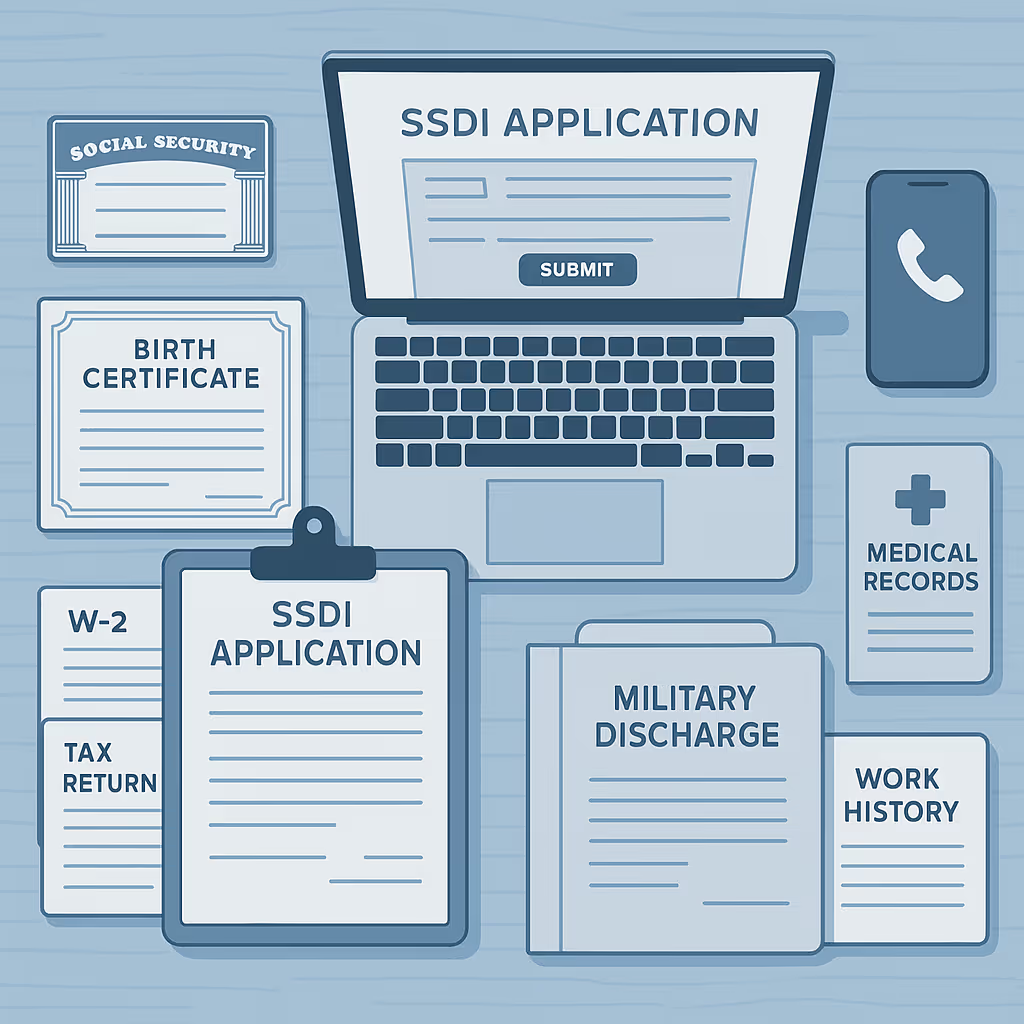
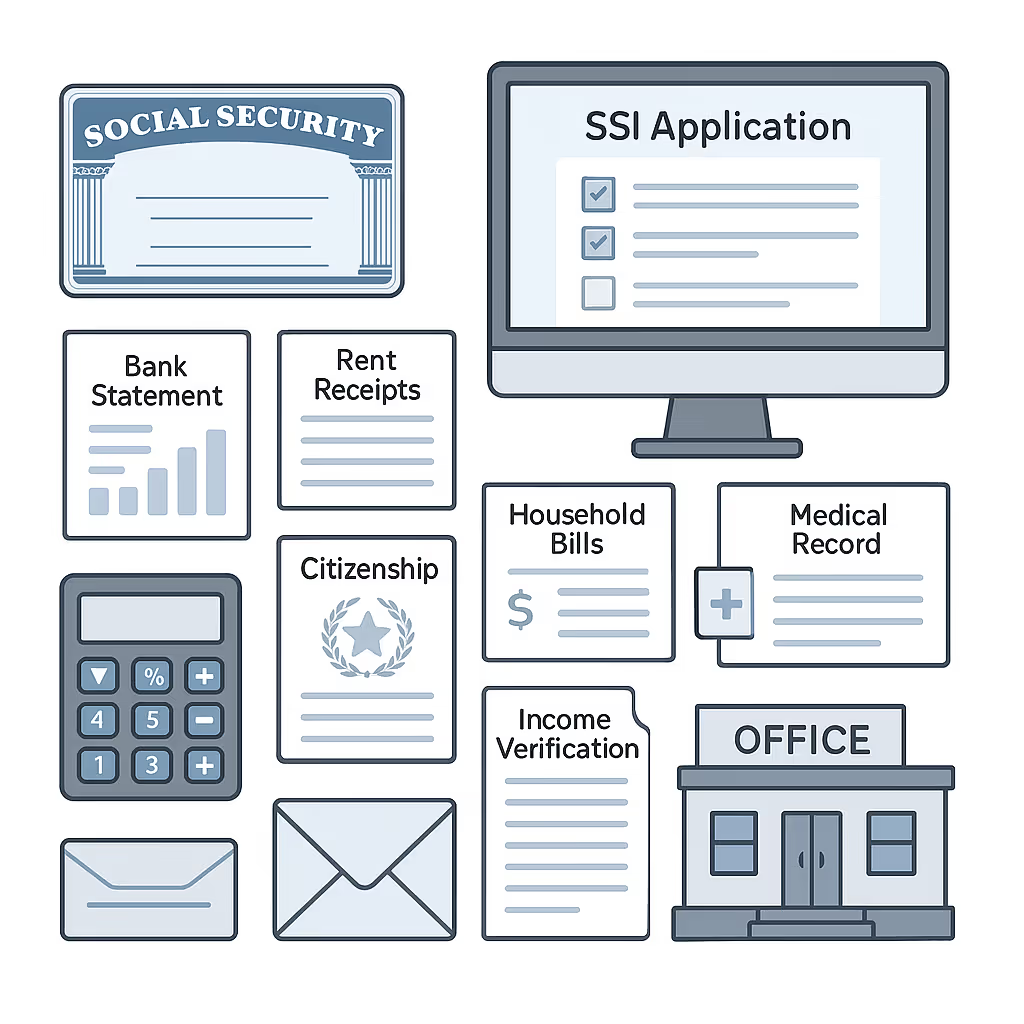
SSI Application Checklist
Supplemental Security Income (SSI) is a disability program for people with limited income and resources. Unlike SSDI, it doesn’t require past jobs or Social Security taxes.
Social Security card or number
Proof of income, resources, and living arrangements
Bank statements, rent receipts, and household information
Medical sources that show your disability claim
Proof of age and citizenship or lawful status
Applications may be submitted online, printed to mail, or filed at your local office.
VA Disability Checklist
The Department of Veterans Affairs (VA) provides monthly payments for veterans disabled due to injuries or illnesses connected to service. To submit a complete claim:
DD214 or other separation forms
Service treatment records documenting injuries
Medical evidence of a current condition
Lay statements from a spouse, children, or fellow service members
Disability Benefits Questionnaires (DBQs) completed by doctors
Veterans can apply online, by mail, or through a local VA office.
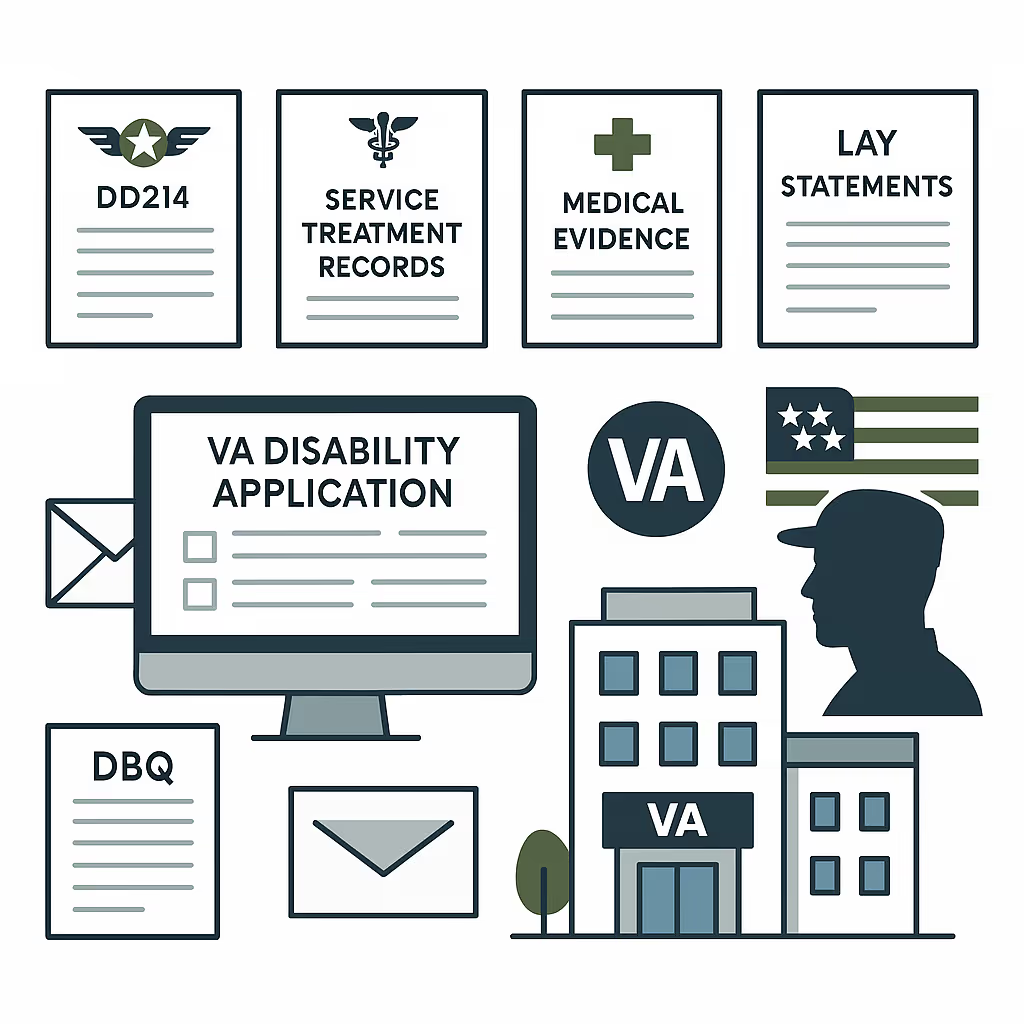
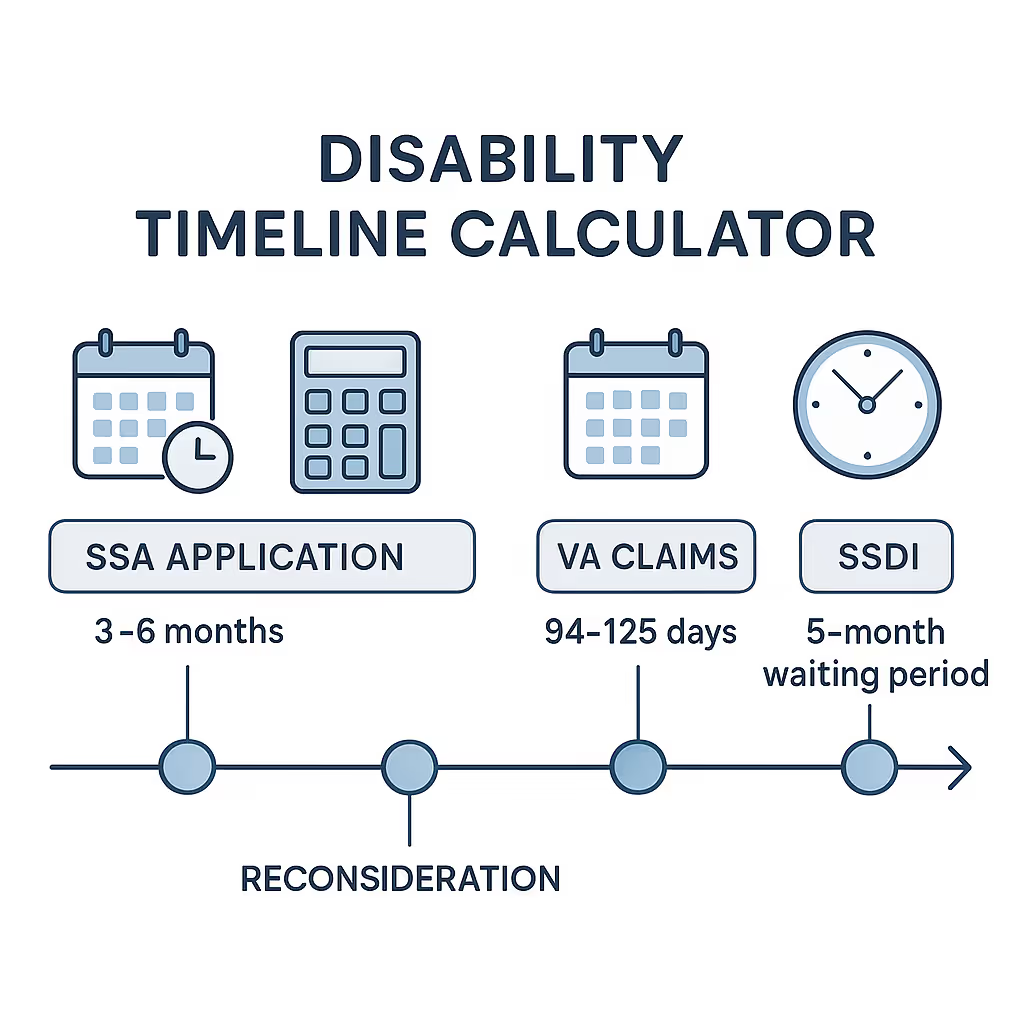
Disability Timeline Calculator
Wondering how long the application process takes? This tool helps you estimate and review your case timeline.
SSA initial disability application decisions: 3–6 months
Reconsideration or hearing after a denied claim: many more months
VA claims: 94–125 days on average
The five-month waiting period for SSDI before benefits begin
Disability Appeal Letter Template
If your disability claim is denied, don’t give up. Many people win benefits at the appeal stage. A strong letter can make a difference.
Tailored for SSA or VA appeals
Space to add new medical records and additional resources
Follows the correct form and process
Helps you meet strict dates and request deadlines
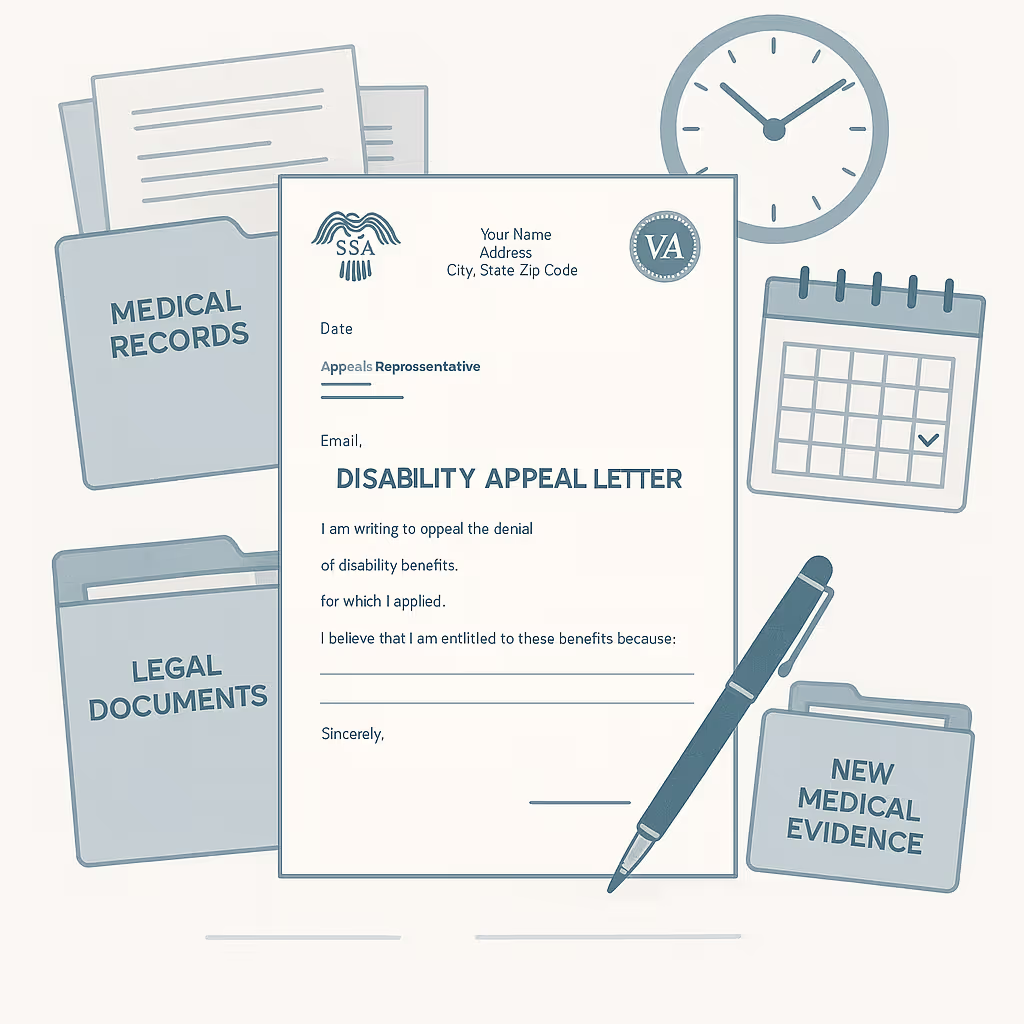
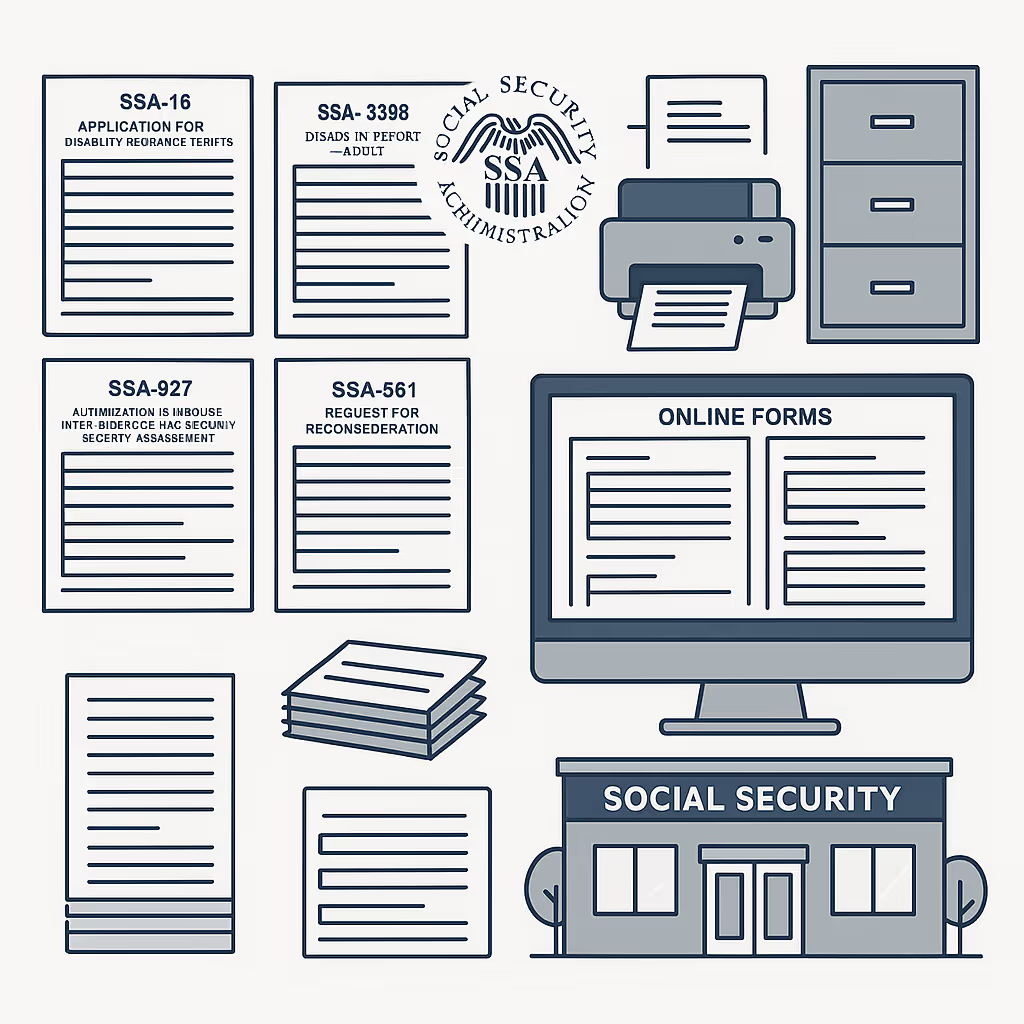
SSA Disability Forms
The Social Security Administration provides a full library of forms for the disability application and appeal process.
SSA-16: Application for Disability Insurance Benefits
SSA-3368: Adult Disability Report
SSA-3441: Disability Report – Appeal
SSA-827: Authorization to Disclose Information
SSA-561: Request for Reconsideration
Forms can be filed online, mailed to the VA, or completed at a local office.
VA Disability Forms
The right documents are essential to getting VA disability benefits. Veterans can gather and submit these forms:
VA Form 21-526EZ: Application for Disability Compensation
VA Form 21-4138: Statement in Support of Claim
VA Form 21-10210: Lay or Witness Statement
DBQs: completed by healthcare providers for medical conditions
Forms can be filed online, mailed to the VA, or completed at a local office.

Frequently Asked Questions
Social Security Disability Insurance (SSDI) pays benefits to people unable to work due to a serious medical condition lasting at least one year. To qualify, you must have paid Social Security taxes and earned enough work credits. Certain family members, such as a spouse, former spouse, or children, may also be eligible. These programs provide financial support during difficult times.
For SSA claims, you have 60 days to request a review at each level—reconsideration, hearing, Appeals Council, or federal court. VA claims give you one year to file a supplemental claim, request a higher-level review, or board appeal. Meeting these deadlines is critical; missing a date could end your disability claim and affect your eligibility for benefits.
Yes, but with limits. SSA allows a Trial Work Period, giving a person the chance to test their ability to work while keeping SSDI benefits. Earnings above the Substantial Gainful Activity threshold may end eligibility. VA disability benefits are not reduced by money earned from jobs, since payments are based on service connection, not income. Always report changes in your account.
You can apply for VA disability benefits by filing a VA disability claim online, by mail, in person, or by fax. The required documents include separation papers such as DD214, service treatment records, dependency records such as children’s birth certificates, and private medical records. Many veterans choose help from a veterans service officer, claims agent, or accredited attorney to guide them through the process and ensure stronger disability claim submissions.
Strong medical evidence is required. Provide medical records, test results, treatment notes, and doctor letters. SSA looks at whether your medical condition limits your ability to work. VA requires service treatment records plus a medical nexus showing a link to service. Submitting complete and consistent documents helps the Social Security Administration or VA decide faster and improves your chance of being approved.
The application process varies. SSA initial disability applications take 3–6 months, while appeals can extend timelines a year or longer. VA claims average 94–125 days, though board appeals may exceed 500 days. The five-month waiting period applies before SSDI pays benefits. Filing early and checking your application status through SSA’s services or your VA account helps reduce delays.
Yes. A person may apply for Social Security Disability Insurance (SSDI) or Supplemental Security Income (SSI) while also seeking VA disability benefits. VA payments don’t count as income for SSI, and SSDI depends on work history. Applying for both may provide additional resources and stronger support for your household. Keeping your documents aligned across agencies avoids conflicts.
By law, SSDI has a five-month waiting period. This means benefits begin in the sixth month after your disability onset date. The rule ensures only long-term medical conditions qualify for SSDI benefits. SSI doesn’t have this rule. Filing your disability application online, by phone, or at a local Social Security office with complete medical records helps establish the correct date and start payment sooner.
Social Security Disability and VA programs recognize mental impairments like depression, PTSD, or anxiety. To qualify, you must show how symptoms limit your ability to work. SSA evaluates daily functioning and reliability, while VA focuses on service connection and severity. Submitting psychiatric medical records, therapy notes, and provider forms supports your claim and demonstrates how mental illness impacts your job and daily life.
Take the Next Step
Don’t let delays or missing documents keep you from the benefits you deserve. Start your disability
claim today and see if you’re eligible for SSDI, SSI, or VA programs.
